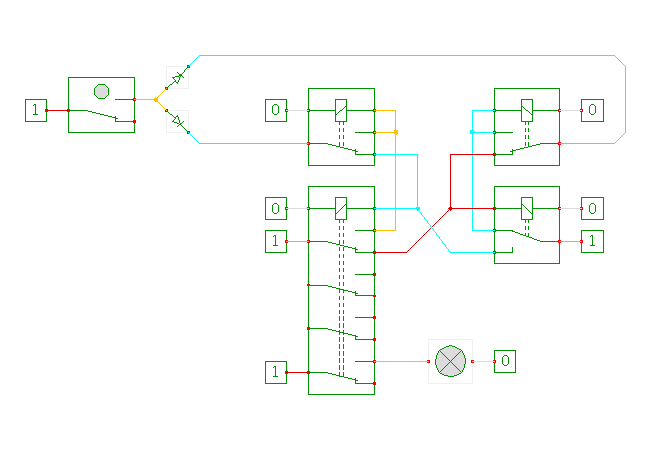

 |  |
 Description
This applet demonstrates yet another toggle-flipflop,
based on a symmetric structure built from four relays and two diodes.
This design was proposed in 1962 by
Derek P. Hendry and Arthur M. Perry,
J Exp Anal Behav, Vol. 5, Number 4, page 442ff.
Description
This applet demonstrates yet another toggle-flipflop,
based on a symmetric structure built from four relays and two diodes.
This design was proposed in 1962 by
Derek P. Hendry and Arthur M. Perry,
J Exp Anal Behav, Vol. 5, Number 4, page 442ff.
Click the input switch or type the 'c' bindkey to control the circuit and watch the resulting behavior. For a description of the flipflop operation, just read the original full paper.
Please compare this flipflop to the three-relay variants shown and explained in the previous applets, namely here and here. While the circuit shown in this applet uses one extra relay, the number of relay switches required is actually the lowest among the three flipflop variants.
Note that this circuit (at least in the Hades simulation) is also sensitive to the switching speed of the relays. Use the property sheet of the relays to access and change their delay parameters. For example, a new delay value of 20 milliseconds (instead of its initial value of 10.5 milliseconds) for the lower left relay will break the flipflop function. In the original setup, the same type of relay was used for the upper and lower pairs of relays to ensure compatible switching speeds.
Run the applet | Run the editor (via Webstart)